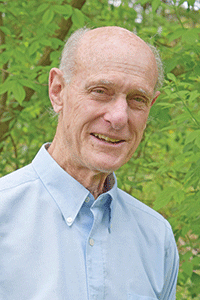“You can see four churches from here,” observed Paul Klinski decades ago from his farm in Union Township, Houston County, according to David Klinski, son of Paul and fourth-generation resident of that family farm. Two of the four church buildings still stand on or near Highway 44 north of Caledonia.
Pioneer congregations faced considerable challenges: finding a meeting place, acquiring and maintaining the services of pastors, constructing a church building. These four congregations were established as early as 1859-60 when the German Methodist Episcopal Church (Union Ridge Methodist Church) convened in the home of Jacob Klein. St. Peter’s Evangelical Lutheran began in 1868 with 18 members from eight families.
The Disciples (of Christ) Church first met in 1869, and the German Reformed (Hope Reformed, later Hope Presbyterian) was organized by eight members in 1874.

At one time, one schoolhouse hosted worship services of Methodist, Reformed, Lutheran and Baptist congregations. I find no other mention of the Baptists. This proved unsatisfactory for St. Peter’s Lutheran, which began to meet in private homes before constructing a 22×40-foot church building in 1870 and a parsonage in 1873.
The German Reformed erected a 22×36-foot building with a white-spire that could seat 200 worshipers, at a cost of $800 plus volunteer labor. Disciples Church and the Methodists both built in 1876 with seating for 100 to 120 at the former. The Methodists built a 24×32-foot wood structure, which years later was replaced with a stately brick edifice.
Traditional Methodist preachers were circuit riders who served more than one congregation. The first Union Methodist service was conducted by a preacher from Hokah. One pastor officiated monthly. The next pastor preached on alternate Sundays.
Disciples Church was first served by an evangelist from Winona. An 1892 history says there had been no regular pastor since 1879, but meetings and a Sunday school were being maintained by the members.
With the prospect of being served by a traveling pastor associated with the Presbyterian Church in Caledonia, the original German Reformed congregation, which had become known as Hope Reformed Church, was reorganized as Hope Presbyterian Church on December 9, 1894.
None of the congregations are still active; only two of the buildings still stand in 2021. The brick home of Union Methodist served as a place of worship into the 1930s. It was torn down in 1943. Both Hope Presbyterian and St. Peter’s Lutheran eventually joined related congregations in Caledonia.
With dwindling membership in 1918, the 44-year congregation at Hope discontinued services and joined First Presbyterian Church in Caledonia. The rural building, after being damaged by a 1933 tornado, was razed and the property sold in 1938. The site, four miles from Caledonia where Frank Road ends at Highway 44, is marked by two hardwood maple trees that once adorned either side of the entrance.
At St. Peter’s Lutheran, both the church and parsonage plus a barn were totally destroyed by fire in 1895. Following the fire, 20 families decided to rebuild on the same rural site, while another 20 families organized a new congregation in Caledonia, which was first known as German Evangelical Lutheran St. John’s but would eventually be known as St. John’s Lutheran Church and School (Wisconsin Synod). Both congregations shared a pastor until 1947.
The mid-1890s rural replacement building at St. Peter’s was lighted by two kerosene chandeliers until the early 1970s when electric lights were installed. In 1988, that mother congregation transferred into the daughter church in Caledonia, The rural St. Peter’s edifice still stands on Plitzuweit Road next to German Lutheran Cemetery, a pioneer burial ground.
The other three churches on Union Ridge all used another pioneer cemetery, Union Ridge Cemetery, with burials dating back to 1857. The lettering “Union Ridge Cemetery,” from the old cemetery gate, is now affixed to the front of the former Disciples of Christ Church building, which now sits adjacent to the cemetery.
When the 1920s construction of Highway 44 meant the destruction of the decades-deserted Disciples Church building, a Wisconsin man, at considerable expense, had the church moved across the old territorial road to sit next to the cemetery. The building now faces east instead of west. However, the move broke the murals painted between the windows.


Leave a Reply